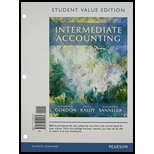
Concept explainers
E11-13 Depreciation Methods. Disposal. Kurtis Koal Company, Inc. purchased a new mining machine at a total cost of $900,000 on the first day of its fiscal year. The firm estimates that the machine has a useful life of 6 years or 6,000,000 tons of coal and a residual value of $60,000 at the end of its useful life. The following schedule indicates the actual number of tons of coal mined with the machine per year:
| Year | Tons of Coal |
| 1 | 700,000 |
| 2 | 1,400,000 |
| 3 | 1,600,000 |
| 4 | 1,000,000 |
| 5 | 750,000 |
| 6 | 550,000 |
Required
Prepare the depreciation schedules for the machine assuming that Kurtis Koal used the following methods (each case is independent):
- a. Straight-line method.
- b. Units-of-output method.
- c. Double-declining balance method. (Adjust the depreciation expense in the last year to the necessary amount to arrive at an ending book value equal to the scrap value.)
- d. Kurtis Koal sells the mining machine for $450,000 at the end of Year 3. What is the gain or loss on sale under each of the depreciation methods in parts (a)–(c)?
Learn your wayIncludes step-by-step video

Chapter 11 Solutions
Intermediate Accounting - Myaccountinglab - Pearson Etext Access Card Student Value Edition
Additional Business Textbook Solutions
Corporate Finance (4th Edition) (Pearson Series in Finance) - Standalone book
Horngren's Accounting (12th Edition)
Financial Accounting, Student Value Edition (5th Edition)
Operations Management
Horngren's Financial & Managerial Accounting, The Financial Chapters (Book & Access Card)
- Now want General Accounting Question problem solvearrow_forwardNo use ai 19. Which is not an objective of internal controls?A. Safeguard assetsB. Improve profitsC. Ensure accurate recordsD. Promote operational efficiencyarrow_forward19. Which is not an objective of internal controls?A. Safeguard assetsB. Improve profitsC. Ensure accurate recordsD. Promote operational efficiencyarrow_forward
- 19. Which is not an objective of internal controls?A. Safeguard assetsB. Improve profitsC. Ensure accurate recordsD. Promote operational efficiencyhelparrow_forwardYou invest 60% of your money in Asset A (expected return = 8%, standard deviation = 12%) and 40% in Asset B (expected return = 5%, standard deviation = 8%). The correlation coefficient between the two assets is 0.3. What is the expected return and standard deviation of the portfolio?correct solutarrow_forwardYou invest 60% of your money in Asset A (expected return = 8%, standard deviation = 12%) and 40% in Asset B (expected return = 5%, standard deviation = 8%). The correlation coefficient between the two assets is 0.3. What is the expected return and standard deviation of the portfolio?need jelparrow_forward
- I mistakenly submitted blurr image please comment i will write values. please dont Solve with incorrect values otherwise unhelpful.no aiarrow_forward1) Identify whethere the company is paying out dividends based on the attached statement. 2) Describe in detail how that the company’s dividend payouts have changed over the past five years. 3)Describe in detail the changes in “total equity” (representing the current “book value” of the company).arrow_forwardWhich is not an objective of internal controls?A. Safeguard assetsB. Improve profitsC. Ensure accurate recordsD. Promote operational efficiencyneed helparrow_forward
 EBK CONTEMPORARY FINANCIAL MANAGEMENTFinanceISBN:9781337514835Author:MOYERPublisher:CENGAGE LEARNING - CONSIGNMENT
EBK CONTEMPORARY FINANCIAL MANAGEMENTFinanceISBN:9781337514835Author:MOYERPublisher:CENGAGE LEARNING - CONSIGNMENT Intermediate Accounting: Reporting And AnalysisAccountingISBN:9781337788281Author:James M. Wahlen, Jefferson P. Jones, Donald PagachPublisher:Cengage Learning
Intermediate Accounting: Reporting And AnalysisAccountingISBN:9781337788281Author:James M. Wahlen, Jefferson P. Jones, Donald PagachPublisher:Cengage Learning College Accounting, Chapters 1-27AccountingISBN:9781337794756Author:HEINTZ, James A.Publisher:Cengage Learning,
College Accounting, Chapters 1-27AccountingISBN:9781337794756Author:HEINTZ, James A.Publisher:Cengage Learning,- Principles of Accounting Volume 1AccountingISBN:9781947172685Author:OpenStaxPublisher:OpenStax College
 Cornerstones of Financial AccountingAccountingISBN:9781337690881Author:Jay Rich, Jeff JonesPublisher:Cengage Learning
Cornerstones of Financial AccountingAccountingISBN:9781337690881Author:Jay Rich, Jeff JonesPublisher:Cengage Learning





